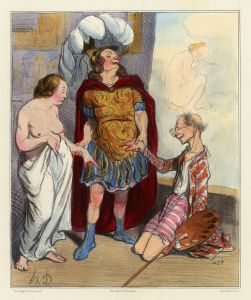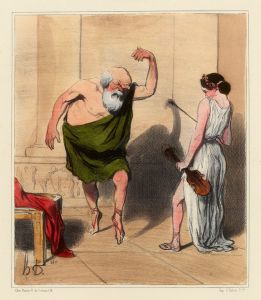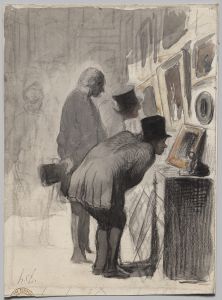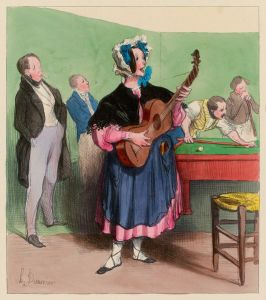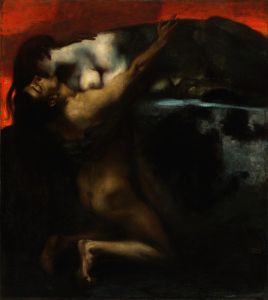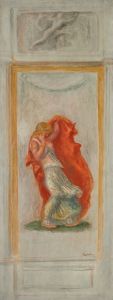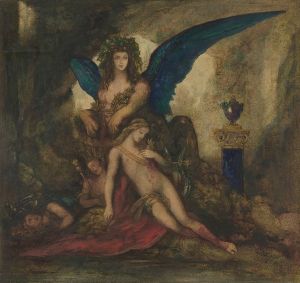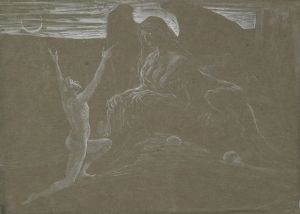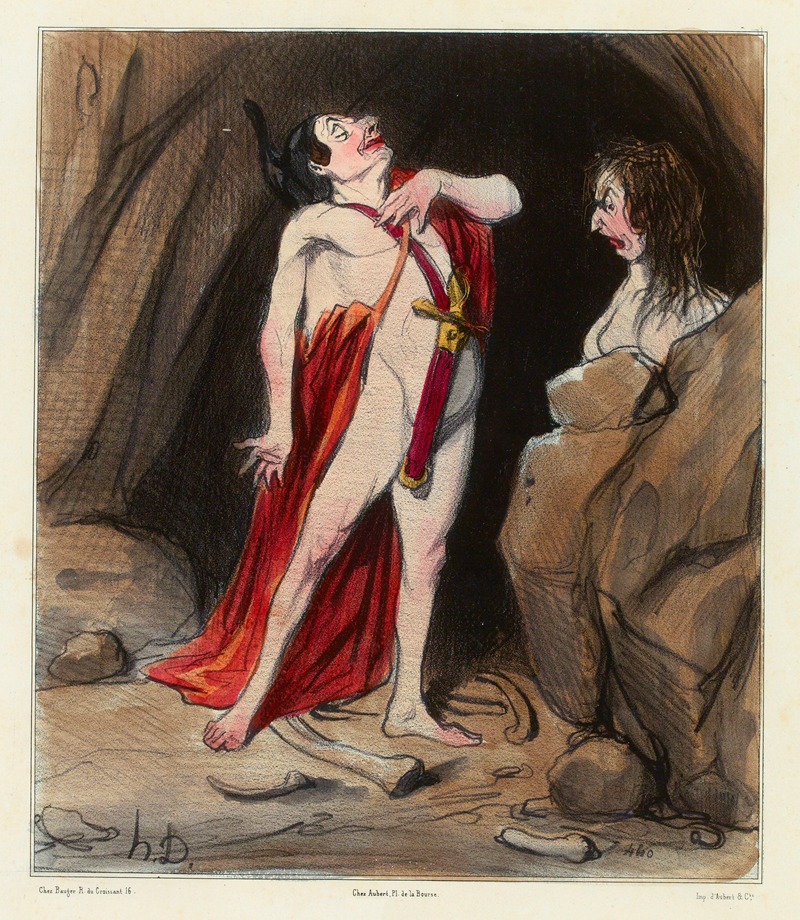
Oedipe chez le Spinx
A hand-painted replica of Honoré Daumier’s masterpiece Oedipe chez le Spinx, meticulously crafted by professional artists to capture the true essence of the original. Each piece is created with museum-quality canvas and rare mineral pigments, carefully painted by experienced artists with delicate brushstrokes and rich, layered colors to perfectly recreate the texture of the original artwork. Unlike machine-printed reproductions, this hand-painted version brings the painting to life, infused with the artist’s emotions and skill in every stroke. Whether for personal collection or home decoration, it instantly elevates the artistic atmosphere of any space.
Honoré Daumier, a prominent French artist known for his caricatures, paintings, and sculptures, created the artwork "Oedipe chez le Sphinx" (Oedipus at the Sphinx). Daumier was born in 1808 and became renowned for his sharp social commentary through art, particularly during the 19th century. His works often reflected the political and social climate of France, and he was an influential figure in the Realism movement.
"Oedipe chez le Sphinx" is one of Daumier's lesser-known works, and there is limited information available about this specific piece. However, it is known that Daumier was deeply interested in classical themes and mythology, which is evident in this artwork. The painting depicts the mythological encounter between Oedipus and the Sphinx, a popular subject in art and literature.
In Greek mythology, Oedipus is a tragic hero who unwittingly fulfills a prophecy that he will kill his father and marry his mother, bringing disaster to his city and family. The Sphinx, a creature with the body of a lion, the wings of an eagle, and the face of a woman, is known for posing a riddle to travelers. Those who cannot solve the riddle are devoured. Oedipus famously solves the Sphinx's riddle, which leads to the creature's destruction and his eventual rise to power in Thebes.
Daumier's interpretation of this mythological scene likely reflects his interest in human nature and the complexities of fate and destiny. His style often combined elements of satire and realism, capturing the essence of his subjects with expressive brushwork and a keen eye for detail. Although primarily recognized for his lithographs and caricatures, Daumier's paintings, including "Oedipe chez le Sphinx," demonstrate his versatility and depth as an artist.
The painting is characterized by its dramatic composition and use of light and shadow, which Daumier employed to enhance the tension and emotion of the scene. His portrayal of Oedipus and the Sphinx may have been influenced by the broader cultural interest in classical antiquity during the 19th century, as well as the Romantic movement's fascination with myth and legend.
While Daumier's "Oedipe chez le Sphinx" may not be as widely studied or exhibited as some of his other works, it remains a testament to his skill in capturing complex narratives and his ability to convey profound themes through art. The painting is part of Daumier's broader oeuvre, which includes a diverse range of subjects from political satire to poignant social commentary.
Overall, Honoré Daumier's "Oedipe chez le Sphinx" is a compelling example of his engagement with classical mythology and his talent for storytelling through visual art. Despite the scarcity of detailed information about this specific work, it contributes to our understanding of Daumier's artistic legacy and his impact on 19th-century art.





